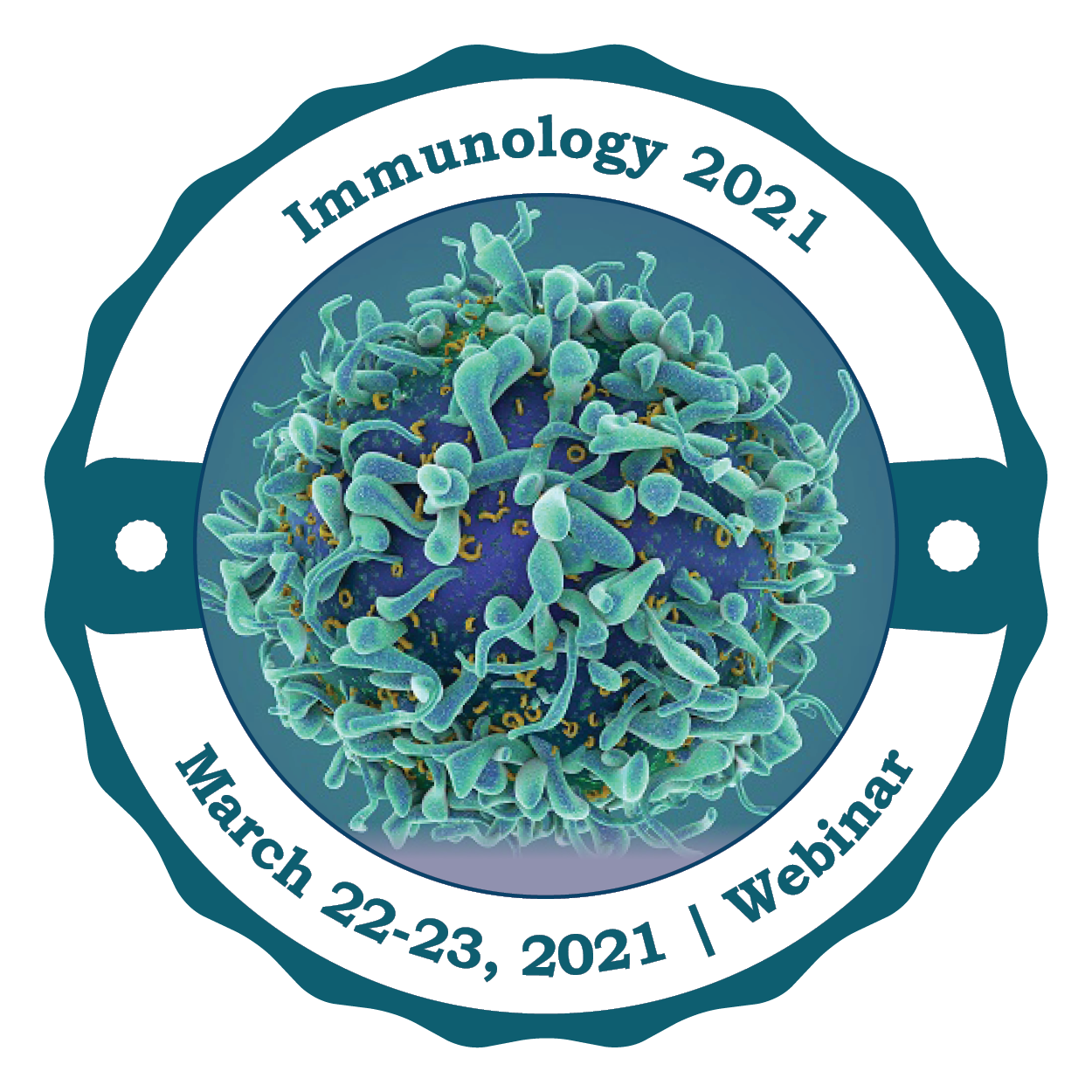
Ms Yulduz Baltaeva
Tashkent State Technical University, Uzbekistan
Title: IFN-γ and LPS induce inflammatory responses in human microvascular epithelial cells
Biography
Biography: Ms Yulduz Baltaeva
Abstract
Interferons (IFNs) are a subset of pro-inflammatory cytokines involved in the body's natural defensive responses to such foreign substances as microbes, tumors, and antigens. IFNs represent a group of compounds which can be divided into three main sub-groups: Type I, Type II, Type III (1,2). Type I IFNs mainly consist of IFNα and IFNβ subtypes, IFNγ is the sole member of the type II interferon class, whereas Type III predominantly comprises IFNλ1, IFNλ2 and IFNλ3 (3, 4). Among the presented pro-inflammatory cytokines, interferon (IFN)g, produced predominantly by natural killer (NK) and natural killer T (NKT), is vital for both innate and adaptive immunity by activating macrophages, natural killer cells, B cells and vascular endothelial cells and smooth muscle cells (SMCs). Simultaneously, IFNg plays a crucial role in the onset and development of a number of inflammatory diseases, including atherosclerosis, and regulates the functions and properties of all cell types present in the vessel wall(5).
On the other hand, lipopolysaccharide (LPS) is the most abundant component within the cell wall of Gram-negative bacteria. It can stimulate the release of many inflammatory cytokines in various cell types leading to an acute inflammatory response towards pathogens. Thus,together with IFNg, LPS can lead to expression of of CXCL10 gene in human microvascular epithelial cells. C–X–C motif chemokine 10 (CXCL10) also known as interferon γ-induced protein 10 kDa (IP-10) or small-inducible cytokine B10 is a cytokine belonging to the CXC chemokine family(6).
Our study indeed provides evidence that in HMECs IFNg and LPS together leads to expressions of STAT1-dependent genes that reflects a pro-atherogenic state in atherosclerosis.
Materials and Methods
Real-time PCR was used in order to analyze and compare the expression of cxcl10 gene. The expression level was compared with present RNA-seq data for each treatment condition. human microvascular epithelial cells were treated with murine IFNα murine IFNγ alone for 8 hours and IFN treatment was followed separately by treatment with LPS for additional 4 hours and at the end LPS alone for 4 hours to induce signal integration pathway between IFNs and TLRs. The expression levels were compared to reference genes Actb.
The difference between expression patterns was investigated and interactions of stimulating factors were considered in order to disclose the reason for the increasing responses of genes in VSMCs and MQs. As mentioned before, the signal integration between stimulating factors such as IFNγ and LPS interaction, induced the expression patterns of many genes included in this experiment. Cxcl10 showed the presence of binding site motifs which belongs to specific transcription factors like NFκB, ISRE and GAS. They are related to signal integration pathways and play a fundamental role in the pro-inflammatory process. With this reason, expression levels were increased with both stimuli together in comparison to treatment with compounds alone. Another important factor is STAT1 as a critical mediator of signal integration pathway. Genes which are induced by the presence of STAT1 protein, showed high levels of expression with the treatment combination of IFNs and LPS together. STAT1 dependent genes were showed significant patterns in VSMCs.
Graphs were made by using GraphPad Prism (GraphPad Software Inc., La Jolla, CA).To evaluate this gene in further studies, bigger group of samples are needed with the different population profiles.

